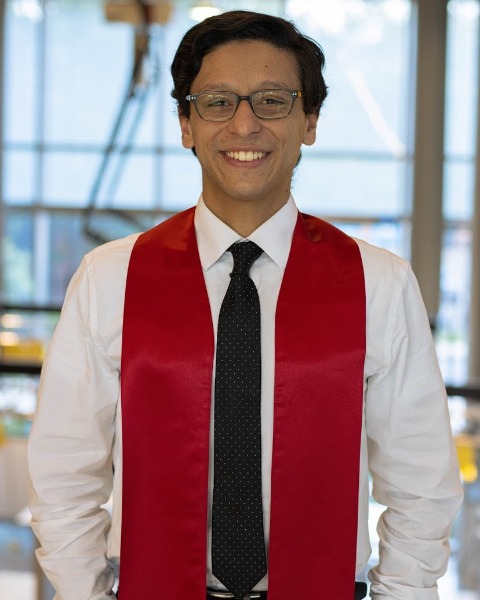Drug Delivery
(I-345) The Extracellular Matrix as a Barrier to Adeno-Associated Viral Gene Delivery

Yahya Cheema (he/him/his)
Graduate Student
University of Maryland
College Park, Maryland, United States- DC
Devorah Cahn
Graduate Student
University of Maryland, United States - MW
Matthew Wolf
Stadtman Investigator
National Cancer Institute, United States 
Gregg Duncan
Assistant Professor
University of Maryland
Columbia, Maryland, United States
Presenting Author(s)
Co-Author(s)
Last Author(s)
Materials and Methods::
Viral vectors from the AAV2, AAV6, and AAV8 serotypes were fluorescently labeled with AlexaFluor555 and filtered to remove free dye using Sephadex columns. We formulated decellularized ECM (dECM) hydrogels by digesting lyophilized and cryomilled ECM and combining the digest with ECM components and incubating. Lung, liver, and small intestinal submucosal (SIS) dECM hydrogels were constructed with the gelation time and ratio of core ECM components varying depending on source type.4 We then characterized AAV serotype diffusion via insertion of the labeled viral vectors of each serotype into wells containing decellularized ECM and conducted multiple particle tracking (MPT) via fluorescence video microscopy. Mean squared displacement (MSD) as a function of time was calculated and was used to compute and characterize the overall movement of the AAV viral particles through the ECM hydrogels. A higher MSD value indicates unhindered movement or diffusion that is taking place with little interactions with the environment, while a lower MSD value indicates restricted movement. The effect of both AAV serotype and ECM type were assessed. Additionally, we evaluated the effect of AAV serotype on cellular uptake in 2D and 3D in vitro models via GFP gene expression. For both models, AAV transduction was conducted in A549 cell culture with the multiplicity of infection (MOI) ranging from 1,000 to 100,000 viral particles/cell. For our 3D in vitro model, tissue spheroids were constructed by seeding cells in a specialized low attachment plate, and fluorescence was quantified as an indicator of successful transduction based on GFP transgene expression.
Results, Conclusions, and Discussions::
We characterized the diffusion of the AAV2 serotype when loaded into liver, lung, and SIS dECM hydrogels via MPT, and found that the AAV2 serotype displayed lower MSD values in each dECM hydrogel when compared to a similarly sized 20 nanometer (nm) poly-ethylene glycol (PEG) coated nanoparticle control (Fig. 1A). The presence of PEG reduces the interaction between the microenvironment and the 20 nm nanoparticle control, thereby isolating the effect of size on the adhesion and hindrance to diffusion seen. The lower MSD values seen in the AAV2 serotype when compared to the similarly sized 20 nm control indicate a greater level of hindrance of AAV diffusion that is not due to the size of the viral vectors, but rather due to surface interactions. When comparing the AAV2 serotype behavior between decellularized ECM types, AAV2 displayed lower levels of adherence in the lung hydrogels when compared to the other tissue hydrogels. This indicates an affinity for the lung microenvironment and may prove significant as the lung is a tissue tropism for AAV2. The diffusion profiles of AAV6 and AAV8 are currently under investigation. 2D transduction experiments established a baseline level of transduction efficiency based on MOI, incubation time, and cell seeding density (Fig. 1B). It was found that the optimal transduction conditions for 2D A549 cell culture was 60% confluence, 75,000 MOI, and a 48-hour incubation period. These values were then used to determine the optimal transduction conditions for 3D A549 tissue spheroids. Notably, we observed a serotype–dependent transduction profiles with differences in the radial distribution of GFP expression. To further examine if AAV transduction is hindered by the ECM, we are currently investigating AAV distribution in ECM-embedded tumor spheroids to determine how the ECM impacts their performance.
Acknowledgements (Optional): :
References (Optional): :
1. Asokan et al. Gene therapy 2008
2. Matthews et al. Mol Imaging 2006
3. Santiago-Ortiz & Schaffer, J Controlled Release (2016)
4. Wolf et al. Biomaterials 2012
